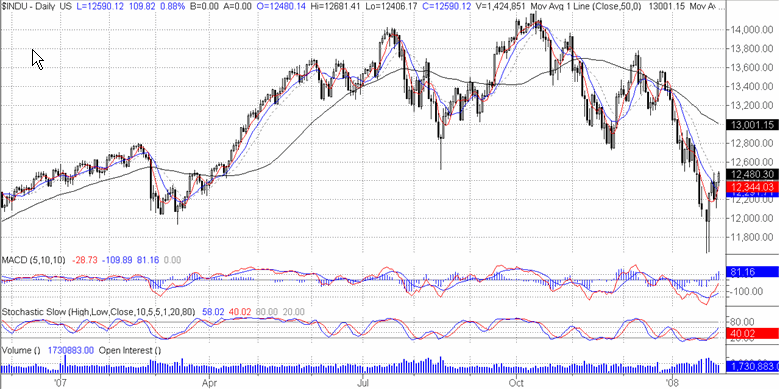Using the Futures Markets to Enhance (or Defend) Your Investment Portfolio
Scanning though the headlines of the past days, weeks, and months, I’m sure that
you’ve noticed that more press and airtime have been going to the Commodity and
Futures Markets. One day it’s Oil at $100 a barrel, the next it’s Gold over $900
per ounce.
Or perhaps you’ve heard about or noticed the bull market in Grains or the
gyrations of the Interest Rate markets or any of the dozens of actively traded
futures markets in the US. But as of yet, you’ve not participated in any of
those markets.
Perhaps you’ve heard the horror stories about someone who lost their
life-savings or had a truckload of soybeans dumped in their front yard. Recent
headlines about multi-billion-dollar-losses in Natural Gas or rogue traders can
also make people think again about entering these markets as well.
But tales like that are typically rare, usually unfounded, urban legends- and
are often the result of one individual’s ego and foolishness getting in the way.
There are however ways to use the futures to your advantage. While there is
always risk associated with every transaction no matter what vehicle you trade,
there are ways to minimize that risk. In some cases it can be clearly defined
and limited, so that you know what you’re getting into beforehand.
I’m certain that most readers are active investors in the stock markets. And
if you are truly an investor and not an overly aggressive trader, the futures
markets can offer a wealth of opportunity. Some of the things that I will
illustrate may seem very basic and perhaps academic to the more sophisticated
investors, but you would be surprised at the number of people that I’ve run into
over the years who are unaware of them.
Defending Your Portfolio
Before we can discuss ways to enhance your investment portfolio, we must
first examine ways to defend it. After all, no one enjoys watching the value of
their portfolio decline.
Let’s assume that you have a portfolio of stocks or mutual funds that
somewhat mirrors the performance of the Dow Jones Industrial Index.

As you can see by the chart above, recent months have not been kind to the
Dow. For our purposes, we’ll use the 50-day moving average (black line) as a
trade trigger or signal.
How to Protect Your Portfolio Against a Decline
One way to protect, or hedge, your portfolio would be to use Dow Jones
futures, traded at what used to be the CBOT and is now part of the CME Group.
Personally, I would advocate using the Mini Contracts, as they have much greater
volume and liquidity.

Above is a chart of the March Mini Dow futures. They have finite life, as
they expire in March, and as you can see the volume grows (as do the price bars)
the closer you get to expiration. The contract value is $5 x the price. So at
the closing value on the chart of 12,471 the contract value is roughly $62,355.
So for every $60k in your portfolio you would need to use 1 contract. The margin
requirement is currently about $3,500 per contract.
Using the 50-day moving average as a trigger or as a signal, one could have
hedged their risk by initiating a short position when the Dow Jones Industrial
Average was near 13,400 and the Dow Jones Mini futures were near 13,500 in late
December or early January.
Using the closing values on the charts, we can determine that since then the
DJIA has dropped to 12,480 and the futures have dropped to 12,471. That’s a loss
in value of 920 points or 6.87% in the DJIA and a loss in value of 1029 points
in the futures or 7.62%.
So by using 1 futures contract to hedge, a portfolio of $60,000 would have
lost $4,122 in value (6.87% of $60k), but the futures would have gained $5,145
back for you. Not a bad deal, as your portfolio would have actually grown. A
nice, but unintended, consequence of this example.
This is not speculating, this is not being overly aggressive and this is not
throwing caution to the wind. This is using the futures markets to defend your
portfolio against risk. Next time I’ll show you a strategy to exit those hedges
to attempt to maximize potential gains from the hedge strategy and minimize
potential losses. As we move further along, I’ll also explain some ways that you
can add different commodity markets to your portfolio in an effort to achieve
diversification and potentially enhance returns.
Jeff Fosse is a Market Analyst with Striker Securities, Inc. based in
Chicago: www.striker.com. To contact Jeff directly with any questions you may
have, you can email him at jeff@striker.com.
